med_spotify = spotify_data.drop(columns=['name', 'explicit', 'artists', 'key', 'mode', 'time_signature', 'tempo', 'duration_ms', 'loudness'])
med_spotify = med_spotify.groupby('release_date').median()
med_spotify = med_spotify.reset_index()
merged = med_spotify['release_date'].to_frame()
merged['theta'] = [med_spotify.columns] * len(merged)
merged['r'] = np.nan
merged['r'] = merged['r'].astype('object')
for k in range(len(merged)):
merged.at[k, 'r'] = med_spotify.iloc[k].to_list()
fig4 = px.line_polar(merged, r='r', theta='theta', animation_frame='release_date', line_close=True)
fig4.show()
how the plot looks in the browser
I have a dataframe with songs from spotify, then I've made a dataframe with the median of the columns for every year. Now I want to represent that information in a line polar chart animation.
This article shows something similar but omits the code that explains how it was done. Changing the theta parameter to a list of column names to use as radii gives an error saying that the length has to be the same as the r parameter. This code shows a empty plot but no errors.
I've tried every way I know to make this work the last two days and searched everywhere in the internet and there's no code examples of px.line_polar charts animated.
Thank you
spotify_data example:
name duration_ms explicit \
0 Carve 126903 0
1 Capítulo 2.16 - Banquero Anarquista 98200 0
2 Vivo para Quererte - Remasterizado 181640 0
3 El Prisionero - Remasterizado 176907 0
4 Lady of the Evening 163080 0
artists release_date danceability energy key loudness \
0 ['Uli'] 1922 0.645 0.4450 0 -13.338
1 ['Fernando Pessoa'] 1922 0.695 0.2630 0 -22.136
2 ['Ignacio Corsini'] 1922 0.434 0.1770 1 -21.180
3 ['Ignacio Corsini'] 1922 0.321 0.0946 7 -27.961
4 ['Dick Haymes'] 1922 0.402 0.1580 3 -16.900
mode speechiness acousticness instrumentalness liveness valence \
0 1 0.4510 0.674 0.7440 0.151 0.127
1 1 0.9570 0.797 0.0000 0.148 0.655
2 1 0.0512 0.994 0.0218 0.212 0.457
3 1 0.0504 0.995 0.9180 0.104 0.397
4 0 0.0390 0.989 0.1300 0.311 0.196
tempo time_signature
0 104.851 3
1 102.009 1
2 130.418 5
3 169.980 3
4 103.220 4
